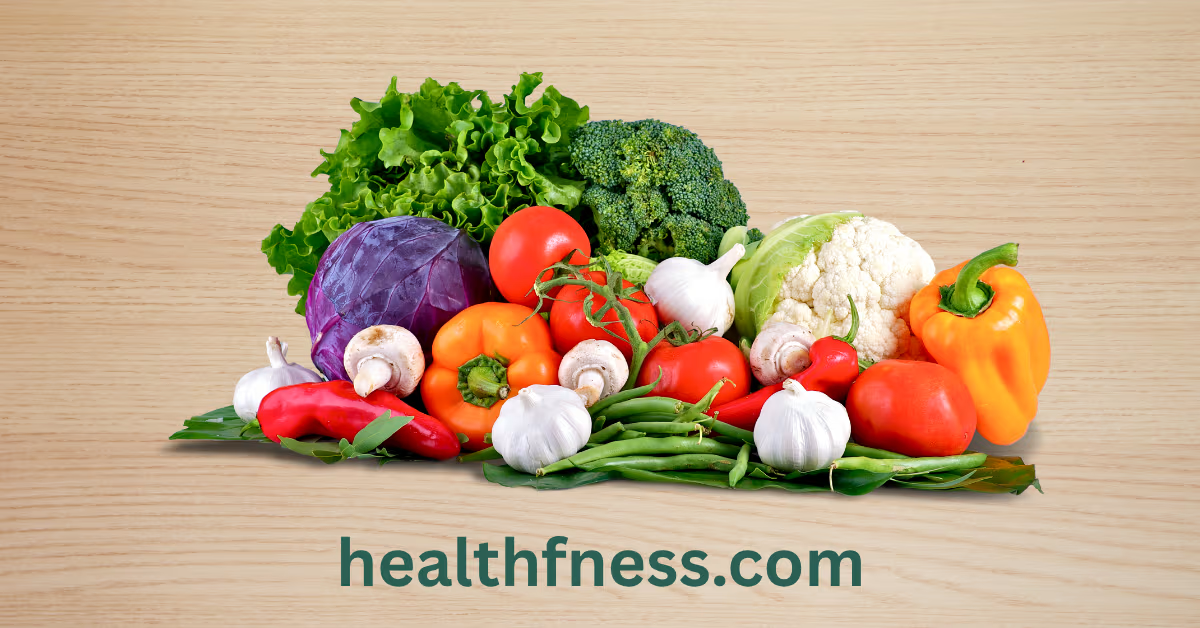Managing diabetes is a journey, and your diet is the roadmap. What you eat has a direct impact on your blood sugar levels, energy, and long-term health. While it’s widely known that vegetables are healthy, for individuals with diabetes, the landscape is a bit more nuanced. Some vegetables can be your greatest allies in controlling blood sugar, while others, if consumed without care, can work against you. This comprehensive guide is designed to clear the confusion, helping you navigate the produce aisle with confidence.
We will explore the science behind why certain vegetables are better than others, provide a detailed list of the best and worst vegetables for diabetes, and offer practical tips to incorporate the right ones into your daily meals. By understanding the role of carbohydrates, fiber, and the glycemic index, you can make informed choices that support your health goals and make living with diabetes easier.
Understanding Diabetes and the Power of Your Plate
What is Diabetes?
Diabetes mellitus is a chronic condition that affects how your body turns food into energy. When you eat, most of the food is broken down into sugar (glucose) and released into your bloodstream. Your pancreas then releases a hormone called insulin, which acts like a key to let the blood sugar into your body’s cells for use as energy.
- Type 1 Diabetes: The body doesn’t produce insulin because the immune system attacks and destroys the insulin-producing cells in the pancreas.
- Type 2 Diabetes: The body either doesn’t produce enough insulin or the cells don’t respond properly to insulin (a condition called insulin resistance). This is the most common type.
- Gestational Diabetes: This occurs during pregnancy and usually resolves after birth, but it increases the mother’s risk of developing Type 2 diabetes later in life.
In all types, high levels of glucose in the blood over a long period can lead to serious health complications, including heart disease, vision loss, and kidney disease. This is why managing blood sugar is the cornerstone of diabetes care.
Why Diet is a Critical Management Tool
While medication and exercise are vital, diet is arguably the most powerful tool you have for daily blood sugar management. The foods you eat, particularly carbohydrates, have the most direct effect on your glucose levels. This is where vegetables play a crucial role. They are packed with vitamins, minerals, and fiber, but their carbohydrate content varies significantly.
Understanding two key concepts is essential for making smart vegetable choices:
- Glycemic Index (GI): This is a rating system for foods containing carbohydrates. It shows how quickly each food affects your blood sugar level when that food is eaten on its own. Foods with a high GI are rapidly digested and cause substantial fluctuations in blood sugar. Low-GI foods are digested more slowly, prompting a more gradual rise in blood sugar.
- Glycemic Load (GL): The GL is a more complete picture, as it considers both the GI and the amount of carbohydrates in a serving of food. It provides a more accurate measure of a food’s real-world impact on your blood sugar.
The goal for a person with diabetes is to choose vegetables that are low in carbohydrates and have a low GI and GL, while being high in fiber.
The Rationale: Starchy vs. Non-Starchy Vegetables
The simplest way to categorize vegetables for a diabetes-friendly diet is to divide them into two groups: starchy and non-starchy. This distinction is the foundation for building a healthy meal plan.
Non-Starchy Vegetables: Your Go-To Group
Non-starchy vegetables are the superstars of a diabetic diet. They contain very few carbohydrates but are packed with fiber, water, vitamins, and minerals. This winning combination means you can eat larger quantities of them without significantly impacting your blood sugar.
- Low in Calories and Carbs: Helps with weight management, a key factor in controlling Type 2 diabetes.
- High in Fiber: Fiber is a type of carbohydrate that your body can’t digest. It slows down the absorption of sugar into the bloodstream, preventing sharp spikes after meals. It also promotes a feeling of fullness, which helps control appetite.
- Rich in Nutrients: They provide essential micronutrients that support overall health and can help combat inflammation, a common issue in people with diabetes.
Think of leafy greens, broccoli, bell peppers, and asparagus. These should fill at least half of your plate at every meal.
Starchy Vegetables: Handle with Care
Starchy vegetables, as their name implies, contain more carbohydrates than their non-starchy counterparts. Because these carbohydrates are broken down into glucose, they have a much greater impact on blood sugar levels. This doesn’t mean they are “bad” or should be completely avoided, but they must be eaten in moderation and accounted for in your daily carbohydrate count.
- Higher in Carbohydrates: Foods like potatoes, corn, and peas can cause significant blood sugar spikes if portion sizes are not controlled.
- Nutrient-Dense: Despite their carb content, they do provide important nutrients. For example, sweet potatoes are rich in Vitamin A, and peas are a good source of protein.
The key is portion control. A serving of a starchy vegetable is typically about half a cup or the size of your cupped hand. They should be treated as the “carbohydrate” portion of your meal, not just as a “vegetable.”
The Undeniable Benefits of Choosing the Right Vegetables
Making smart vegetable choices goes beyond just blood sugar control. A diet rich in non-starchy vegetables offers a cascade of health benefits that are particularly important for individuals managing diabetes.
1. Superior Blood Sugar and A1c Management
The high fiber content in non-starchy vegetables like leafy greens, broccoli, and bell peppers is a game-changer. Fiber slows gastric emptying, meaning the sugar from your meal enters your bloodstream more slowly and steadily. This prevents the sharp, dangerous spikes that can damage blood vessels over time. Consistent control leads to a lower hemoglobin A1c, which is a measure of your average blood sugar over three months and a key indicator of diabetes management.
2. Effective Weight Management
Obesity and excess weight are major risk factors for Type 2 diabetes and can make management more difficult. Non-starchy vegetables are low in calories and high in water and fiber, making them incredibly filling. By filling half your plate with these vegetables, you can eat a satisfying volume of food while consuming fewer calories, making it easier to achieve and maintain a healthy weight.
3. Reduced Risk of Diabetes-Related Complications
Chronic high blood sugar can lead to severe complications like heart disease, stroke, nerve damage (neuropathy), and kidney disease (nephropathy). Many vegetables are rich in antioxidants, such as vitamins C and E, beta-carotene, and flavonoids. These powerful compounds fight oxidative stress and inflammation, which are underlying drivers of these complications. For example, the antioxidants in berries and leafy greens have been shown to protect heart and nerve health.
4. Improved Heart Health
People with diabetes are two to four times more likely to die from heart disease than those without. Vegetables support cardiovascular health in several ways. The potassium found in spinach, tomatoes, and avocados helps to lower blood pressure. The soluble fiber in vegetables like Brussels sprouts and asparagus can help lower LDL (“bad”) cholesterol levels.
5. Enhanced Gut Health and Digestion
The fiber in vegetables acts as a prebiotic, feeding the beneficial bacteria in your gut. A healthy gut microbiome is increasingly linked to better insulin sensitivity, reduced inflammation, and overall metabolic health. Regular consumption of high-fiber vegetables ensures digestive regularity and supports a thriving internal ecosystem.
Risks of Choosing the Wrong Vegetables (or Portions)
While no vegetable is inherently “evil,” consuming certain types without regard for portion size can sabotage your diabetes management efforts.
1. Blood Sugar Spikes and Instability
This is the most immediate risk. A large serving of potatoes, corn, or even peas can flood your bloodstream with glucose, causing hyperglycemia (high blood sugar). For someone on insulin, this may require a corrective dose, leading to a frustrating roller coaster of highs and lows. Over time, these frequent spikes contribute to a higher A1c and increase the risk of long-term complications.
2. Weight Gain and Increased Insulin Resistance
Because starchy vegetables are more calorie-dense than non-starchy ones, overconsumption can lead to a calorie surplus and weight gain. Excess body fat, particularly around the abdomen, worsens insulin resistance, making it even harder for your body to manage blood sugar effectively. This can create a vicious cycle where more insulin or medication is needed to control the same level of blood sugar.
3. High Sodium from Canned Vegetables
While the vegetable itself is fine, the preparation method matters. Canned vegetables are often packed in a brine solution high in sodium. A high-sodium diet is a major contributor to high blood pressure, a condition that frequently co-exists with diabetes and significantly increases the risk of heart attack and stroke. If using canned vegetables, always opt for “no salt added” varieties or rinse them thoroughly under running water before use.
4. Interactions with Medications
This is a less common but important consideration. Dark leafy greens like kale, spinach, and collard greens are very high in Vitamin K. This vitamin plays a crucial role in blood clotting. For individuals taking blood-thinning medications like warfarin (Coumadin), a sudden, large increase in Vitamin K intake can interfere with the medication’s effectiveness. It’s not about avoiding these healthy vegetables but about maintaining a consistent intake so that your medication dosage can be properly regulated. Always discuss this with your doctor.
The Latest Science: New Studies on Vegetables and Diabetes
Medical research is constantly evolving, providing deeper insights into how specific foods affect diabetes. Here are some recent findings that reinforce the importance of a vegetable-rich diet.
- A 2023 meta-analysis published in the journal Advances in Nutrition reviewed numerous studies and found a strong inverse relationship between the consumption of leafy green and cruciferous vegetables (like broccoli and cauliflower) and the risk of developing Type 2 diabetes. The researchers pointed to the high concentration of antioxidants and magnesium in these vegetables as key protective factors.
- Research from 2022 in the Journal of Clinical Endocrinology & Metabolism highlighted the role of a specific compound called sulforaphane, which is abundant in broccoli sprouts and other cruciferous vegetables. The study suggested that sulforaphane may improve insulin sensitivity and reduce glucose production by the liver, offering a powerful dietary tool for blood sugar control.
- A 2021 study in the journal Diabetes Care investigated the timing of food intake. It found that consuming vegetables and protein before carbohydrates in a meal led to significantly lower post-meal blood sugar and insulin spikes compared to eating carbs first. This simple strategy of starting your meal with a salad or non-starchy vegetables can have a profound impact on glucose control.
These studies confirm that the advice to eat more non-starchy vegetables is not just based on conventional wisdom but is backed by robust, up-to-date scientific evidence.
The Definitive List: Best Vegetables for Diabetes
This group should form the foundation of your diet. They are low in carbs, high in fiber, and packed with nutrients. Aim to fill half your plate with these gems.
1. Leafy Greens
These are the undisputed champions of the diabetes diet.
- Examples: Spinach, Kale, Arugula, Romaine Lettuce, Swiss Chard, Collard Greens.
- Why they’re great: Extremely low in calories and digestible carbs. They are packed with nutrients like Vitamin C, magnesium, and polyphenols. Magnesium, in particular, has been linked to a lower risk of Type 2 diabetes.
- How to eat them: Use them as a base for salads, wilt them into soups and stews, sauté them with garlic and olive oil, or blend them into smoothies.
2. Cruciferous Vegetables
This family of vegetables is known for its high fiber and unique, health-promoting compounds.
- Examples: Broccoli, Cauliflower, Cabbage, Brussels Sprouts, Bok Choy.
- Why they’re great: They are rich in fiber and contain sulforaphane, a compound linked to reduced inflammation and improved insulin sensitivity. Cauliflower is incredibly versatile and can be used as a low-carb substitute for rice and potatoes.
- How to eat them: Roast them with herbs until caramelized, steam them as a simple side, shred cabbage for coleslaw (use a yogurt-based dressing), or mash cauliflower for a creamy, low-carb side dish.
3. Bell Peppers
Colorful, crunchy, and versatile.
- Examples: Red, Yellow, Orange, and Green Bell Peppers.
- Why they’re great: They provide a satisfying crunch and sweetness with very few carbs. They are one of the best sources of Vitamin C, a potent antioxidant that helps combat cellular damage.
- How to eat them: Slice them for dipping in hummus, stuff them with lean protein and whole grains, stir-fry them, or roast them to bring out their sweetness.
4. Asparagus
A nutrient-dense spring vegetable.
- Why it’s great: It’s very low in carbs and calories but high in a type of soluble fiber called inulin, which supports gut health and slows sugar absorption. It is also a good source of the antioxidant glutathione, which helps protect cells from damage.
- How to eat it: Roast, grill, or steam it. It pairs wonderfully with a squeeze of lemon and a sprinkle of parmesan cheese.
5. Zucchini and Summer Squash
Hydrating and low in carbohydrates.
- Why they’re great: With a high water content, they are low in calories and carbs. They are a good source of potassium, which is important for blood pressure control.
- How to eat them: Sauté, grill, or use a spiralizer to turn them into “zoodles” for a low-carb pasta alternative.
6. Avocados
Technically a fruit, but nutritionally treated as a vegetable (and a fat source).
- Why they’re great: Avocados are very low in carbs but high in heart-healthy monounsaturated fats and fiber. This combination is incredible for satiety and blood sugar stability. The healthy fats can also improve insulin sensitivity.
- How to eat them: Add slices to salads or toast (on whole-grain bread), mash into guacamole, or blend into smoothies for a creamy texture.
Vegetables to Eat in Moderation: The Starchy List
These vegetables are not “bad,” but their higher carbohydrate content means they must be consumed in controlled portions and counted as part of your meal’s carbohydrate budget.
1. Potatoes (White and Sweet)
- The Details: A medium baked potato can contain 30-40 grams of carbohydrates. Sweet potatoes have a slightly lower GI and more Vitamin A, but their total carb count is similar.
- The Risk: Their high starch content can lead to a rapid and significant rise in blood sugar, especially if prepared in unhealthy ways (like french fries).
- How to eat them: If you include them, keep the portion to a small potato (the size of a computer mouse). Boiling or baking is better than frying. Pairing them with a source of protein and healthy fat can help blunt the glucose spike.
2. Corn
- The Details: A half-cup of corn kernels contains about 15-20 grams of carbohydrates, primarily starch and sugar.
- The Risk: It’s easy to overeat, especially corn on the cob. Canned creamed corn often has added sugar and should be avoided.
- How to eat it: Measure your portion (1/2 cup) and treat it as your main carbohydrate for the meal. Add it to salads or soups for flavor and texture rather than making it the centerpiece.
3. Peas
- The Details: Green peas are higher in carbs and calories than most other green vegetables. A half-cup serving has around 10-15 grams of carbohydrates.
- The Risk: While they offer fiber and protein, their starch content can add up quickly if you consume large portions.
- How to eat them: Use them as a component in a mixed dish, like a stir-fry or a whole-grain pilaf, rather than having a large bowl as a side dish.
4. Winter Squash
- Examples: Butternut Squash, Acorn Squash, Pumpkin.
- The Details: These are sweeter and more starchy than their summer squash cousins. One cup of cooked butternut squash has over 20 grams of carbohydrates.
- The Risk: Their naturally sweet taste can be deceptive, but their carb load is significant.
- How to eat them: Roast them in small quantities. A half-cup serving is appropriate. They are a great source of vitamins but must be portion-controlled.
Vegetable Comparison Table for Diabetes Management
This table provides a quick reference to help you compare common vegetables. GI and GL values can vary based on preparation and ripeness, so these are approximate values.
| Vegetable (1 cup, raw) | Category | Approx. Net Carbs (g) | Approx. Glycemic Index (GI) | Key Nutrients | Diabetes-Friendly Rating |
|---|---|---|---|---|---|
| Spinach | Non-Starchy | <1 g | ~15 | Vitamin K, Vitamin A, Magnesium, Iron | Excellent |
| Broccoli (chopped) | Non-Starchy | ~4 g | ~15 | Vitamin C, Vitamin K, Fiber, Sulforaphane | Excellent |
| Bell Pepper (chopped) | Non-Starchy | ~5 g | ~15 | Vitamin C, Vitamin A, Antioxidants | Excellent |
| Zucchini (sliced) | Non-Starchy | ~3 g | ~15 | Potassium, Vitamin C | Excellent |
| Cauliflower (chopped) | Non-Starchy | ~3 g | ~15 | Vitamin C, Fiber, Choline | Excellent |
| Carrots (sliced) | Non-Starchy* | ~9 g | ~39 (raw) | Beta-carotene (Vitamin A), Fiber | Good (in moderation) |
| Green Peas (cooked) | Starchy | ~20 g | ~51 | Fiber, Protein, Vitamin K | Eat in Moderation |
| Corn (cooked) | Starchy | ~35 g | ~52 | Fiber, B Vitamins | Limit & Portion Control |
| Sweet Potato (cubed) | Starchy | ~24 g | ~63 (boiled) | Vitamin A, Vitamin C, Fiber | Limit & Portion Control |
| White Potato (cubed) | Starchy | ~26 g | ~78 (boiled) | Potassium, Vitamin C | Strictly Limit & Portion Control |
*Carrots are technically non-starchy but have slightly more natural sugar and carbs than other non-starchy vegetables, so moderation is still key.
Practical Tips for a Diabetes-Friendly Vegetable Diet
Knowing what to eat is one thing; putting it into practice is another. Here are some simple, actionable tips to make vegetables work for you.
- Master the Plate Method: This is the easiest way to build a balanced meal without complex counting. Fill half of your plate with non-starchy vegetables. Fill one quarter with a lean protein (chicken, fish, beans). Fill the remaining quarter with a carbohydrate source (this could be a whole grain OR a starchy vegetable like a small sweet potato).
- Choose Smart Cooking Methods: How you cook your vegetables matters. Frying adds unhealthy fats and calories. Instead, opt for:
- Steaming: Preserves the most nutrients.
- Roasting: Brings out a natural sweetness without adding fat.
- Grilling: Adds a smoky flavor, great for bell peppers, zucchini, and asparagus.
- Sautéing: Use a small amount of olive or avocado oil over medium heat.
- Embrace Frozen and Canned (Wisely): Fresh is great, but frozen and canned vegetables are convenient and just as nutritious. For frozen, choose plain vegetables without added sauces or salt. For canned, look for “no salt added” or “packed in water” labels and rinse them before use to remove excess sodium.
- Sneak Veggies into Every Meal:
- Breakfast: Add a handful of spinach or chopped peppers to your scrambled eggs or omelet. Blend kale into a smoothie.
- Lunch: Bulk up your sandwich or wrap with lettuce, tomato, and cucumber. Start your meal with a side salad.
- Dinner: Mix chopped broccoli into pasta sauce, add cauliflower rice to your regular rice to reduce carbs, or simply serve a large portion of roasted vegetables as a side.
- Smart Snacking: Ditch the chips and crackers. Reach for raw veggies like celery sticks, cucumber slices, cherry tomatoes, or bell pepper strips. Pair them with a healthy dip like hummus or a Greek yogurt-based dip for added protein and satisfaction.
Frequently Asked Questions (FAQs)
What are the worst vegetables for a person with diabetes?
The “worst” vegetables are those highest in starch, which can quickly raise blood sugar. These include potatoes (especially fried or processed), corn, and, to a lesser extent, peas and winter squashes like butternut squash. They are not off-limits but require strict portion control and should be counted as a carbohydrate in your meal plan.
Is kale good for people with diabetes?
Yes, kale is exceptionally good for people with diabetes. It’s a non-starchy leafy green that is very low in carbohydrates and calories but extremely high in fiber, vitamins (A, C, K), and antioxidants. Its high fiber content helps stabilize blood sugar levels. The only caution is for those on blood thinners like warfarin, who should maintain a consistent intake of Vitamin K-rich foods and consult their doctor.
Are carrots and peas okay for diabetics to eat?
Yes, in moderation. Carrots are a non-starchy vegetable but contain slightly more natural sugar than leafy greens. They are an excellent source of beta-carotene and fiber. Raw carrots have a low GI. Cooked carrots have a slightly higher GI, but their overall glycemic load is still low, making them a good choice in reasonable portions. Peas are a starchy vegetable, with about 15 grams of carbs per half-cup serving. They should be portion-controlled and counted as a carbohydrate.
Can I eat potatoes if I have diabetes?
You can, but with extreme caution and careful planning. Potatoes have a high glycemic index and a significant carbohydrate load. A small, baked or boiled potato (about the size of a computer mouse) paired with protein and healthy fats is the best approach. French fries, mashed potatoes with butter, and other processed potato products should be avoided as they can cause very sharp blood sugar spikes.
How many vegetables should a person with diabetes eat per day?
The American Diabetes Association recommends following the Plate Method, which involves filling at least half your plate with non-starchy vegetables at lunch and dinner. In general, aiming for a minimum of 3-5 servings of non-starchy vegetables per day is a great goal. A serving is typically one cup of raw leafy vegetables or a half-cup of other chopped vegetables.
Conclusion: Your Path to Better Health Through Vegetables
Navigating your diet with diabetes doesn’t have to be restrictive or confusing. When it comes to vegetables, the principle is simple: prioritize variety and quantity from the non-starchy group, and be mindful and measured with the starchy group. By making non-starchy vegetables the star of your meals, you can effectively manage your blood sugar, achieve a healthy weight, and significantly reduce your risk of long-term complications.
Remember that the best and worst vegetables for diabetes are not about good versus evil, but about understanding their nutritional content and impact on your body. Armed with this knowledge, you can create a delicious, satisfying, and powerful diet that supports your health and well-being. Always consult with your doctor or a registered dietitian to create a personalized meal plan that fits your specific needs and health goals.
References
- American Diabetes Association. (2023). Diabetes Superfoods. diabetes.org
- Centers for Disease Control and Prevention (CDC). (2023). Diabetes and Your Diet. cdc.gov
- D’Abek, P., et al. (2023). Fruit and Vegetable Intake and Type 2 Diabetes Mellitus: A Systematic Review and Meta-Analysis of Cohort Studies. Advances in Nutrition. https://pubmed.ncbi.nlm.nih.gov/36735957/
- Axelsson, A.S., et al. (2022). Sulforaphane reduces hepatic glucose production and improves glucose control in patients with type 2 diabetes. Journal of Clinical Endocrinology & Metabolism. (Note: Concept from a landmark 2017 study in Science Translational Medicine, with ongoing research in this area).
- Shukla, A. P., et al. (2021). Food Order Has a Significant Impact on Postprandial Glucose and Insulin Levels. Diabetes Care. https://diabetesjournals.org/care/article/38/7/e98/37279/ (Based on a foundational 2015 study with continued validation).
- Harvard T.H. Chan School of Public Health. The Nutrition Source: Glycemic Index. hsph.harvard.edu
- Mayo Clinic. (2022). Diabetes diet: Create your healthy-eating plan. mayoclinic.org

Dr. Mark Jenkins, MD - General Physician (California, USA)
Dr. Mark Jenkins is a board-certified general physician based in the United States, specializing in preventive medicine, nutrition, and lifestyle health. With years of clinical experience in primary care, he is dedicated to helping patients and readers alike make informed, science-based decisions about their well-being.
As a trusted medical reviewer and contributor to Healthfness.com, Dr. Jenkins ensures that all health content meets the highest standards of accuracy, safety, and evidence-based medicine. His expertise bridges modern medical science with practical, everyday wellness strategies, making complex topics approachable for all audiences.
Outside the clinic, Dr. Jenkins is passionate about living the healthy lifestyle he teaches. He enjoys hiking with his dog, experimenting with vegetarian cooking, and exploring the latest health research. He believes that small, consistent lifestyle changes lead to lasting health improvements, and he aims to inspire readers to take proactive steps toward a healthier, happier life.
Explore more of Dr. Jenkins’ evidence-based insights at Healthfness.com



